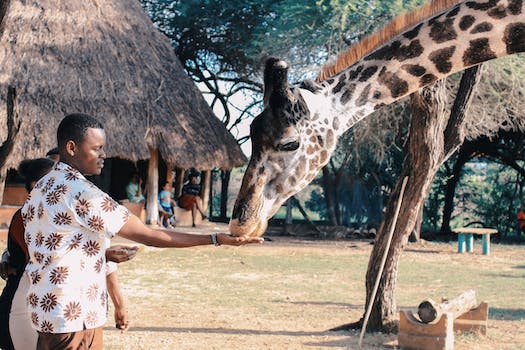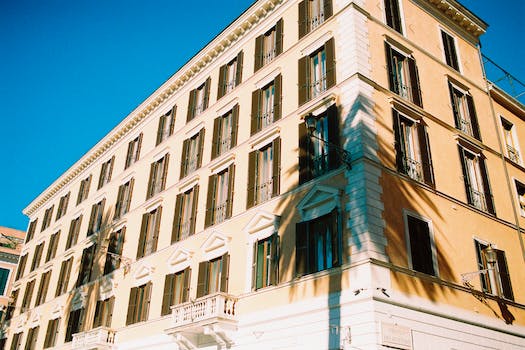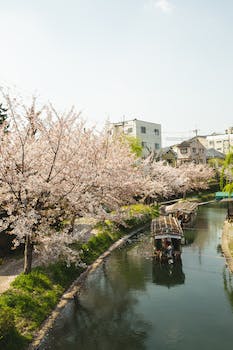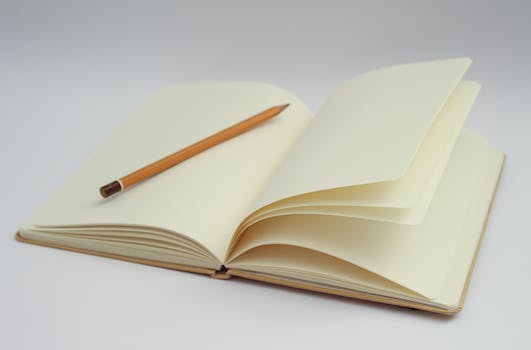

-
Table of Contents
Unveiling Iran's Cultural Tapestry
Introduction
Iran, a country located in the Middle East, boasts a rich and diverse cultural heritage that spans thousands of years. From ancient civilizations to Islamic influences, Iran's cultural heritage is a treasure trove of art, architecture, literature, music, and traditions. Exploring the cultural heritage of Iran offers a fascinating glimpse into the country's history, traditions, and the unique blend of influences that have shaped its identity over the centuries.
Traditional Persian Cuisine: A Journey Through Iran's Culinary Delights
Iran is a country with a rich cultural heritage that spans thousands of years. From its stunning architecture to its vibrant art scene, Iran offers a wealth of experiences for those who are interested in exploring its cultural treasures. One aspect of Iranian culture that is particularly fascinating is its traditional cuisine. Persian cuisine is known for its unique flavors and use of fresh ingredients, making it a delight for food lovers.
One of the most iconic dishes in Persian cuisine is kebab. Made from marinated meat, typically lamb or chicken, kebabs are grilled to perfection and served with fragrant saffron rice. The meat is tender and juicy, and the flavors are enhanced by the marinade, which often includes a combination of spices such as turmeric, cumin, and paprika. Kebabs are a staple in Iranian cuisine and can be found in restaurants and street food stalls throughout the country.
Another popular dish in Iran is tahchin, a savory rice cake that is often served with chicken or lamb. The rice is cooked with yogurt and saffron, giving it a beautiful golden color and a rich, creamy texture. The meat is then layered on top of the rice and the dish is baked until the flavors meld together. Tahchin is a comforting and satisfying dish that is perfect for a hearty meal.
Iranian cuisine also includes a variety of stews, known as khoresh. One of the most famous khoresh dishes is ghormeh sabzi, a flavorful stew made with herbs, kidney beans, and tender chunks of meat. The herbs used in this dish include parsley, cilantro, and fenugreek, which give it a unique and aromatic flavor. Ghormeh sabzi is often served with rice and is a popular choice for special occasions and gatherings.
For those with a sweet tooth, Iranian desserts are a must-try. One of the most beloved desserts in Iran is faloodeh, a refreshing and cooling treat made with thin vermicelli noodles, rosewater, and lime juice. Faloodeh is often served with a scoop of saffron ice cream, creating a delightful combination of flavors and textures. Another popular dessert is halva, a sweet confection made from ground sesame seeds and sugar. Halva is often flavored with rosewater or cardamom and is enjoyed with a cup of tea or coffee.
In addition to its delicious dishes, Persian cuisine also has a strong emphasis on hospitality. Iranians take great pride in their food and love to share it with others. It is common for families and friends to gather around a table and enjoy a meal together, creating a sense of community and connection. This tradition of hospitality is deeply ingrained in Iranian culture and is a reflection of the warmth and generosity of its people.
Exploring the rich culinary heritage of Iran is a journey that will delight the senses and provide a deeper understanding of the country's culture. From the fragrant spices to the vibrant flavors, Persian cuisine offers a unique and unforgettable dining experience. Whether you are a seasoned food lover or simply curious about trying something new, a taste of Iran's culinary delights is sure to leave a lasting impression.
Architectural Marvels: Unveiling Iran's Magnificent Historical Structures
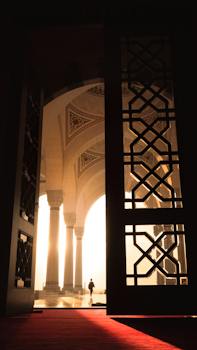
Iran is a country with a rich cultural heritage that spans thousands of years. One of the most fascinating aspects of this heritage is its architectural marvels, which showcase the country's magnificent historical structures. From ancient palaces to grand mosques, Iran's architectural wonders are a testament to the country's rich history and cultural diversity.
One of the most iconic architectural marvels in Iran is the Persepolis, an ancient city that was once the capital of the Achaemenid Empire. Built over 2,500 years ago, Persepolis is a UNESCO World Heritage site and is known for its grandeur and intricate carvings. The city's massive stone columns and imposing gateways are a sight to behold, and they provide a glimpse into the opulence and power of the ancient Persian civilization.
Another architectural gem in Iran is the Nasir al-Mulk Mosque, located in the city of Shiraz. This mosque is famous for its stunning stained glass windows, which create a mesmerizing kaleidoscope of colors when sunlight streams through them. The intricate tile work and delicate calligraphy inside the mosque further add to its beauty, making it a must-visit for anyone interested in Islamic architecture.
Moving on to Isfahan, one cannot miss the breathtaking Imam Mosque, also known as the Shah Mosque. This mosque is a masterpiece of Persian architecture, with its intricate tile work, majestic domes, and towering minarets. The mosque's main prayer hall is adorned with stunning mosaics and calligraphy, creating a serene and awe-inspiring atmosphere. The Imam Mosque is a testament to the skill and craftsmanship of Persian artisans, who have left an indelible mark on the country's architectural heritage.
Another architectural wonder in Isfahan is the Ali Qapu Palace, a grand structure that served as the ceremonial residence of the Safavid kings. The palace is known for its magnificent music hall, which features intricate frescoes and a stunning wooden balcony. From the top of the palace, visitors can enjoy panoramic views of Isfahan's famous Naqsh-e Jahan Square, a UNESCO World Heritage site that is surrounded by other architectural marvels such as the Sheikh Lotfollah Mosque and the Qeysarieh Bazaar.
Moving to the north of Iran, the city of Tabriz is home to the magnificent Tabriz Historic Bazaar Complex, another UNESCO World Heritage site. This bazaar is one of the oldest and largest covered markets in the world, with its labyrinthine alleys and bustling shops. The complex is not only a commercial hub but also a cultural and social center, reflecting the vibrant history and traditions of the region.
In conclusion, Iran's architectural marvels are a testament to the country's rich cultural heritage. From the grandeur of Persepolis to the intricate beauty of the Nasir al-Mulk Mosque, these historical structures showcase the skill and craftsmanship of Persian artisans throughout the ages. Exploring these architectural wonders is not only a journey through Iran's past but also an opportunity to appreciate the country's cultural diversity and artistic legacy. Whether it's the ancient palaces or the grand mosques, Iran's architectural marvels are sure to leave visitors in awe and admiration.
Persian Arts and Crafts: Discovering Iran's Vibrant Artistic Traditions
Persian Arts and Crafts: Discovering Iran's Vibrant Artistic Traditions
Iran, a country with a rich cultural heritage, is known for its vibrant artistic traditions. Persian arts and crafts have a long and storied history, dating back thousands of years. From intricate calligraphy to mesmerizing miniature paintings, Iran's artistic traditions have captivated people around the world.
One of the most prominent forms of Persian art is calligraphy. The art of beautiful writing, calligraphy holds a special place in Iranian culture. Persian calligraphy is characterized by its flowing lines and intricate designs. It is often used to write verses from the Quran or to decorate important manuscripts. Calligraphers in Iran are highly respected and their work is considered a true form of art.
Another fascinating aspect of Persian arts and crafts is miniature painting. Miniature paintings are intricate, detailed works of art that often depict scenes from Persian literature or historical events. These paintings are characterized by their vibrant colors and meticulous attention to detail. Persian miniature painting has a long history and has influenced many other artistic traditions around the world.
Iran is also known for its exquisite carpet weaving. Persian carpets are renowned for their intricate designs and high-quality craftsmanship. Each carpet is a unique work of art, with patterns that often tell stories or represent cultural symbols. Persian carpets are highly sought after and are considered a valuable investment.
Pottery and ceramics are also an integral part of Iran's artistic traditions. Iranian potters are known for their skill in creating beautiful and functional pieces. From delicate porcelain to colorful tiles, Iranian pottery showcases the country's rich cultural heritage. Traditional techniques are still used today, ensuring that the art of pottery in Iran continues to thrive.
Metalwork is another important aspect of Persian arts and crafts. Iranian metalworkers are known for their intricate designs and attention to detail. From copper and brass to silver and gold, Iranian metalwork encompasses a wide range of materials and techniques. Metalwork in Iran often features intricate patterns and motifs, reflecting the country's rich cultural history.
In addition to these traditional art forms, Iran is also home to a thriving contemporary art scene. Iranian artists are known for their creativity and innovation, often blending traditional techniques with modern styles. Contemporary Iranian art encompasses a wide range of mediums, including painting, sculpture, photography, and installation art. Iranian artists have gained international recognition for their unique perspectives and contributions to the art world.
Exploring Iran's vibrant artistic traditions is a journey into a world of beauty and creativity. From calligraphy and miniature painting to carpet weaving and metalwork, Persian arts and crafts offer a glimpse into the country's rich cultural heritage. Whether it's the intricate designs of a Persian carpet or the delicate brushstrokes of a miniature painting, each piece of art tells a story and reflects the unique spirit of Iran. By appreciating and preserving these artistic traditions, we can ensure that Iran's cultural heritage continues to thrive for generations to come.
Q&A
1. What are some notable examples of Iran's rich cultural heritage?
Iran's rich cultural heritage includes notable examples such as Persepolis, the ancient capital of the Achaemenid Empire, the intricate Persian carpets, and the poetry of renowned poets like Rumi and Hafez.
2. How has Iran's cultural heritage influenced the world?
Iran's cultural heritage has influenced the world through its contributions to art, literature, and architecture. Persian art and literature have inspired artists and writers globally, while architectural styles like the Persian dome have been adopted in various cultures.
3. What are some traditional customs and traditions in Iran?
Traditional customs and traditions in Iran include celebrating Nowruz, the Persian New Year, with family gatherings and special meals. Other customs include the practice of Ta'arof, a form of polite behavior, and the traditional clothing known as the chador or the dastmal, which are still worn in certain regions.
Conclusion
In conclusion, exploring the rich cultural heritage of Iran offers a fascinating journey into a country with a diverse history, art, architecture, literature, and traditions. From the ancient ruins of Persepolis to the intricate designs of Persian carpets, Iran's cultural heritage showcases the country's deep-rooted traditions and influences from various civilizations. By delving into Iran's cultural heritage, one can gain a deeper understanding and appreciation for the country's unique and vibrant identity.



